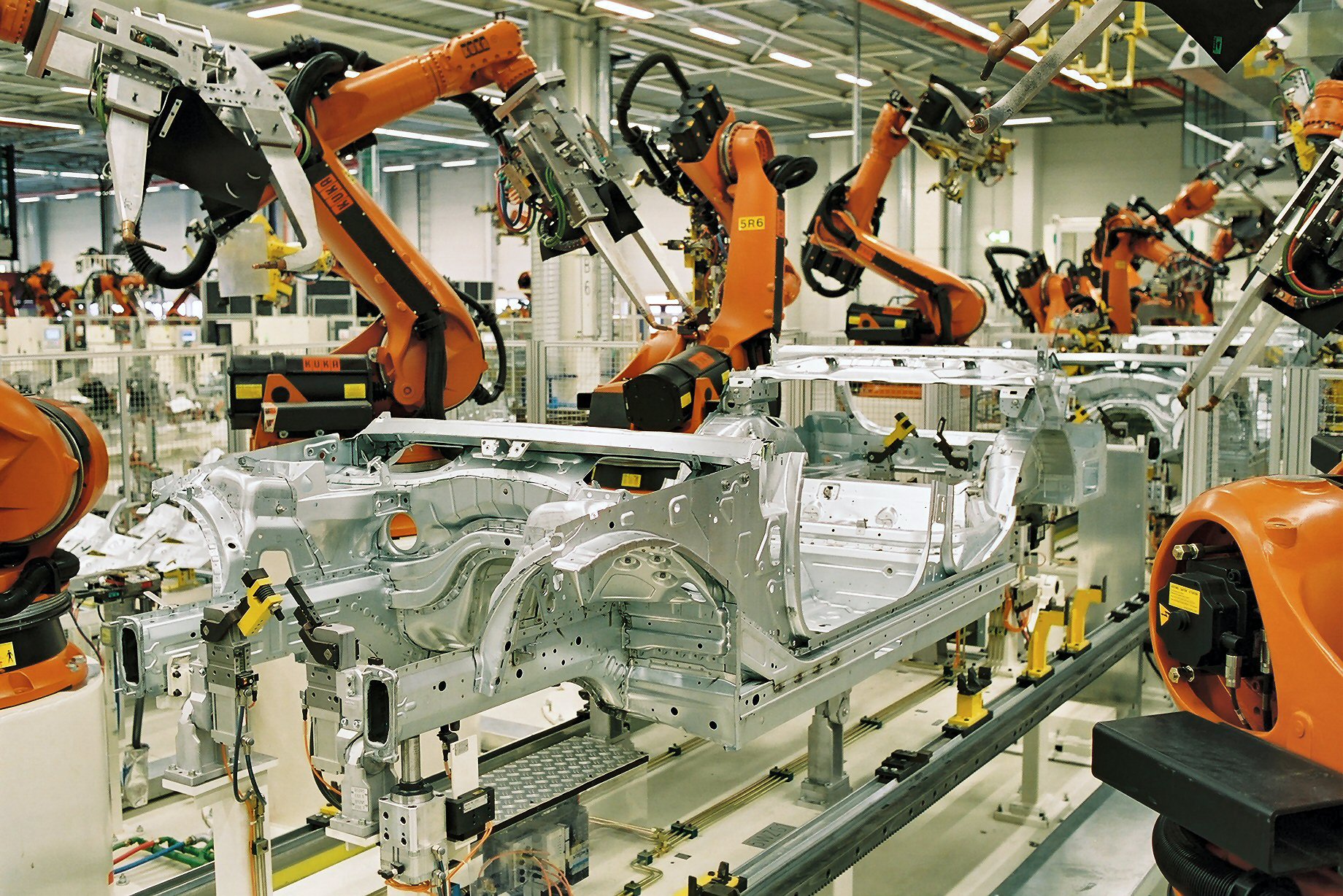Abstract
The world is approaching a new era in wireless communication as 6G networks begin transitioning from concept to reality, promising to reshape how people interact digitally. While 5G continues to expand globally, 6G represents more than an incremental upgrade—it is set to introduce AI-driven, self-optimizing networks capable of delivering speeds nearing 1 terabit per second and reducing latency to mere microseconds. Operating in the terahertz range (100 GHz to 10 THz), 6G will support advanced applications such as holographic communication, tactile internet experiences, and fully autonomous AI systems that integrate physical and digital environments. Industry experts anticipate commercial deployment around 2030, with thousands of patents already submitted as countries race to lead in this transformative technology. Beyond enhanced connectivity, 6G is expected to revolutionize healthcare through remote robotic surgeries, enable smarter, more responsive urban environments, and create immersive experiences that blur the lines between the digital and physical worlds. Ultimately, 6G promises not just faster communication but a fundamental reimagining of human interaction with technology.
The Vision: A Network That Senses and Thinks
At its essence, 6G represents far more than faster connectivity—it envisions a living, breathing network that can sense, interpret, and respond to its surroundings almost like a digital nervous system. Where 5G was primarily about linking people and devices to the internet, 6G aims to interconnect everything into a unified, intelligent fabric that doesn’t just transmit information but actively perceives, locates, and interacts with the physical world, effectively constructing a digital twin of reality.
This leap forward is fueled by several breakthrough innovations:
Terahertz (THz) Spectrum: By venturing into the largely unexplored terahertz band, 6G will unlock staggering data rates of up to 1 terabit per second. This will power instantaneous downloads, ultra-high-definition holographic calls, and immersive real-time experiences that feel almost indistinguishable from reality.
Integrated Sensing and Communication (ISAC): Unlike previous generations, 6G networks will double as communication hubs and sensory systems. Functioning like a massive radar, they will be able to map environments, detect objects, and sense movement, effectively giving the network its own “eyes” and “ears.”
AI-Embedded Architecture: Artificial intelligence won’t simply support the network—it will be woven into its very foundation. By anticipating problems, optimizing performance in real time, and personalizing experiences, AI will make 6G a self-managing, adaptive system capable of continuous learning and evolution.
Opportunities: Unlocking a Hyper-Connected World with Real-World Examples
The potential of 6G technology is virtually limitless, promising to reshape industries and redefine human experiences. Below are some of the most exciting possibilities and the organizations at the forefront of making them real:
Immersive Realities Without Limits: With unparalleled bandwidth and near-zero latency, 6G will unlock truly lifelike Extended Reality (XR) experiences. Imagine collaborating with colleagues as holographic projections or stepping into virtual environments so realistic they are indistinguishable from the physical world.
Manufacturing and Design – Bharat 6G Alliance (India): This initiative unites government bodies, academic institutions, and industry partners to foster domestic 6G innovation. By establishing government-supported testbeds, such as terahertz research facilities at IIT Madras and IIT Guwahati, the Alliance is preparing the foundation for 6G-powered smart manufacturing and next-generation design environments, aiming to position India at the forefront of advanced industrial technology.
The Internet of Everything (IoE): 6G will extend the Internet of Things into a truly all-encompassing ecosystem where billions of devices interact seamlessly. From autonomous vehicles communicating with city infrastructure to medical sensors tracking health in real time, IoE will connect society like never before.
Healthcare – Samsung: Leveraging 6G’s ultra-low latency and massive device density, Samsung envisions smart hospitals where interconnected IoT devices, AI-powered analytics, and robotics work together in real time. This includes continuous remote patient monitoring, precision telemedicine, and even robot-assisted surgeries powered by high-definition video streams and tactile internet feedback—enabling doctors to deliver care from anywhere.
Digital Twins of the Physical World: Through integrated sensing, 6G will generate detailed, dynamic digital replicas of cities, infrastructure, and even natural environments. These real-time twins will allow for advanced simulation, monitoring, and management.
Urban Planning – Nokia: Nokia is pioneering 6G-powered digital twins for smart cities. Their solutions enable planners to visualize infrastructure virtually, updated continuously with live data. This facilitates smarter traffic systems, optimized energy distribution, and enhanced public safety, creating more sustainable and resilient urban environments.
Reinventing Supply Chains: With its ability to deliver precise location tracking and connect countless sensors simultaneously, 6G will transform logistics into an intelligent, adaptive system.
Logistics – DHL: DHL is experimenting with 6G-enabled real-time visibility across supply chains. By integrating 6G with AI, they can dynamically reroute deliveries, predict disruptions, and automate inventory management. This means faster, more efficient, and sustainable logistics networks—capable of adjusting instantly to shifting demand and conditions.
Next-Generation Devices and Chipsets: The hardware powering the 6G era will redefine user experiences in everyday life.
Consumer Tech – Samsung: Samsung is spearheading the development of 6G-ready devices and chipsets that enable hyper-immersive AR/VR applications, tactile internet interactions, and AI-driven personal assistants. From haptic communication that transmits touch sensations to mixed-reality learning and entertainment platforms, Samsung’s advancements are set to transform how people live, work, and play in the 6G age.
Competitive Outlook: 5G Vs 6G
6G, the next-generation mobile network technology, is in the development stage and is expected to see commercial rollout by the end of this decade. Designed to outperform its predecessors, it promises ultra-fast speeds, minimal latency, and highly reliable connectivity. Meanwhile, 5G is still in the process of large-scale deployment but is rapidly expanding and already demonstrating commercial success. Here, we explore the key differences between 5G and 6G.
Speed and Capacity:
While 5G networks have greatly increased data speeds over 4G, 6G is projected to deliver an even more dramatic boost. Whereas 5G can reach peak speeds of around 10 Gbps, 6G is expected to support speeds up to 1 Tbps. This leap will allow for highly data-intensive applications and support ultra-smooth connectivity for next-generation technologies.
Latency:
5G has already cut latency dramatically compared to earlier networks, achieving delays of just a few milliseconds. 6G, however, aims to push this even further, targeting latencies below one millisecond. Such extremely low delays will be essential for real-time applications, including self-driving cars, remote robotic operations, and fully immersive virtual reality experiences.
Spectrum Usage:
6G will utilize frequencies ranging from 30 GHz up to 3 THz, a key enabler for supporting the advanced and high-demand applications expected in next-generation networks. By leveraging much higher frequency bands than 5G, 6G networks unlock drastically greater data capacity. This allows vast amounts of information to be delivered in a fraction of the time, ensuring faster, smoother, and more fluid digital experiences for users.
Use Cases and Applications:
5G has paved the way for numerous cutting-edge applications, such as intelligent urban infrastructure, connected transportation, telemedicine procedures, and automated industrial systems. 6G is set to unlock a wave of groundbreaking applications and possibilities that go far beyond today’s imagination. From lifelike holographic communication and deeply immersive augmented reality to effortless human–machine collaboration and universal connectivity across every device, 6G will redefine the boundaries of digital interaction.
Intelligent and Autonomous Networks:
Whereas 5G brought in concepts like network slicing and software-defined networking, 6G plans to integrate AI, machine learning, and advanced automation more deeply. Intelligent, self-managing networks will be critical for processing vast data volumes, optimizing resource use, and maintaining smooth connectivity in highly dynamic and complex network scenarios.
Energy Efficiency and Sustainability:
6G is expected to focus on energy efficiency, balancing the rising need for wireless connectivity with environmental sustainability. Innovations like dynamic power management and smart energy optimization are likely to be employed to reduce energy consumption and support green technology objectives.
That said, 6G remains in the development phase, with its exact features, standards, and applications still taking shape. The differences highlighted are based on current forecasts and early projections, and they are likely to evolve further as research and innovation progress in the coming years.
Expanding the 6G Vision: Technical, Regulatory, and Societal Dimensions
1. Technical Architecture and Protocols
6G is expected to adopt an AI-driven architecture prioritizing the user plane for real-time optimization and predictive management. Its protocol framework will merge communication, sensing, and computational layers, incorporating digital twins and semantic communication methods. Modular protocol designs will support ultra-reliable low-latency communication (URLLC), massive machine-type connectivity (mMTC), and advanced mobile broadband (eMBB), enabling flexible adaptation to diverse applications
2. Standardization and Development Time
Global standardization efforts are underway, with frameworks like IMT-2030 outlining key 6G capabilities. Regional organizations, including the Next G Alliance in North America and ETSI in Europe, coordinate initiatives to shape specifications. Industry projections suggest that pilot trials may commence as early as 2026, with full commercial deployment anticipated around 2030.
3. Experimental Benchmarks and Trials
Companies and research programs worldwide are testing 6G prototypes in the terahertz spectrum, demonstrating multi-gigabit speeds and sub-millisecond latency. Field trials are validating integrated sensing and communication capabilities, while satellite-based experiments explore the potential for global coverage. Testbeds in academic and industrial partnerships are accelerating practical insights into 6G deployment.
4. Spectrum Management and Regulatory Considerations
The terahertz band (100 GHz–10 THz) presents both technical and regulatory challenges, including limited propagation and spectrum allocation issues. Regulatory agencies across regions are evaluating hybrid licensing models, spectrum sharing approaches, and dynamic band usage to support the diverse needs of 6G applications.
5. Security and Privacy Approaches
6G networks will incorporate quantum-resistant encryption, decentralized identity frameworks, and zero-trust security models. Emerging threats such as AI spoofing, adversarial data attacks, and edge vulnerabilities are being addressed through privacy-preserving techniques like federated learning and homomorphic encryption.
6. Economic Potential and Business Models
Analysts project that 6G could unlock trillions in economic value by enabling new sectors such as holographic commerce, autonomous systems, and precision agriculture. The business landscape is expected to shift toward network-as-a-service, monetization of data, and collaborative ecosystem models, with governments fostering public-private partnerships to drive innovation.
7. Societal and Ethical Implications
6G raises concerns regarding digital equity, privacy, and ethical AI use. Industry guidelines emphasize inclusive design, transparency, and accountability. Ensuring fair access, reducing environmental impact, and embedding ethical principles into deployment strategies will be critical for sustainable adoption.
8. Interoperability and Transition Strategies
6G networks are being designed for compatibility with existing 4G and 5G infrastructure through multi-mode radios and software-defined networking. Migration strategies include gradual rollouts, edge-cloud integration, and flexible spectrum allocation, ensuring smooth service continuity across network generations.
Challenges: Innovation Will Shape the Road to 6G
Designing the networks of tomorrow is no simple task. The journey toward 6G is lined with formidable obstacles that demand groundbreaking solutions from researchers and engineers worldwide
Spectrum and Propagation: Operating in the terahertz range brings tremendous capacity but also new complications. These frequencies are easily disrupted by environmental barriers and weather. Overcoming this will call for advanced antenna systems, novel network architectures, and the integration of satellite and non-terrestrial networks to achieve reliable, global connectivity.
Energy Efficiency: Delivering lightning-fast data at scale comes with an enormous energy cost. Without innovation, the environmental impact could rise sharply. Breakthroughs in hardware design, intelligent power management, and sustainable network engineering will be crucial to balance performance with ecological responsibility.
Security and Privacy: With billions of interconnected devices and deeply embedded digital experiences, the potential for cyber threats will expand drastically. Safeguarding this future will rely on resilient, decentralized security measures and next-generation defenses, such as quantum-safe encryption, to protect sensitive information.
Cost and Infrastructure: The leap to 6G will demand colossal investment—trillions of dollars spent on R&D, new hardware, and ultra-dense deployments of small cells. Ensuring that this massive investment remains economically viable and that services stay affordable for users will be a defining challenge for governments and telecom giants like Verizon, AT&T, and Jio.
Standardization: To make 6G truly global, seamless interoperability is non-negotiable. Achieving this requires international collaboration and consensus across governments, telecom leaders, and technology innovators. Organizations like the ITU and 3GPP are at the forefront of shaping these common standards, but aligning diverse stakeholders remains a lengthy and intricate process.
Conclusion
While the standards for 6G are not expected to be finalized until around 2028, and widespread deployment is likely to begin in the early 2030s, the race is on. This isn’t just a technological upgrade; it’s a global effort to redefine connectivity and unlock a new era of human and machine interaction. The 6G revolution is coming, and it promises to be one of the most transformative technologies of our time.
References
1.https://www.6gflagship.com/white-papers/
2.https://www.qualcomm.com/research/6g
3.https://www.ericsson.com/en/reports-and-papers/white-papers/6g-spectrum-enabling-the-future-mobile-life-beyond-2030
4.https://testbed.ieee.org/the-roadmap-to-6g-ai-empowered-wireless-networks/
5.https://www.ericsson.com/en/blog/2024/3/6g-standardization-timeline-and-technology-principles
6.https://www.nextgalliance.org/
7.https://www.etsi.org/newsroom/news/2307-3gpp-commits-to-develop-6g-specifications
8.https://www.itu.int/dms_pub/itu-r/opb/rep/R-REP-M.2516-2022-PDF-E.pdf
9.https://ciiblog.in/6g-and-the-future-of-smart-manufacturing-in-india/#:~:text=The%20Department%20of%20Telecommunications%20has,IIT%20Delhi%2C%20and%20IIIT%20Delhi.








